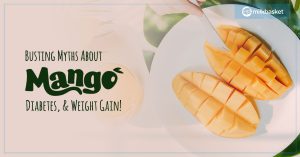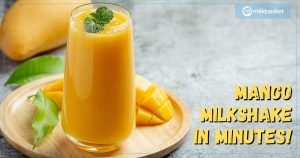Chatni - India's Culinary Legacy & Its Importance
The greatest meals or snacks can sometimes be incomplete without a chatni (chutney) to accompany them. The word ‘chaatni’ or chutney actually comes from the Hindi word ‘chaat’ which means to ‘lick’ making the literal meaning of the word to be ‘something that’s finger-licking good’!
We have all seen our mothers and grandmothers make fresh & yummy chatni at home. However, how much do we know about how this tradition started? As chatni tingles your taste buds, we’ll tell you the tales of its origins to ring your brain too!

When did we start making chatni?
Chatni purportedly originated in India more than 2000 years ago. We would traditionally use heavy stone grinders to grind fresh ingredients such as mint leaves, coriander leaves, onions, garlic, coconut, peppers and chillies together. Chutneys, traditionally, were made fresh and consumed with meals to add taste as well as aid digestion.

However, as time passed, we started to use various spices and salts to turn these pastes into preserves. When Europeans came to India, they adopted these techniques to create the modern forms of these preserves and chutneys. However, the Europeans introduced heavy use of vinegar and sugars to make the Chatni or chutney to make it sweet. People, therefore, often use it as a digestive after meals to cleanse the palate and aid the gut.
What Food Historians Say About Chatni
Many food historians have spoken at length about how the use of chutneys solved many purposes for the common folk. The Bengali Culinary expert Pragnyasundari Devi says, “however grand a thali, it will still be incomplete without chatni and something crispy to accompany the food. It was created for the ultimate satisfaction of the palate.”

Pritha Sen, a food historian, also adds, “The chatni came as a boon for many people during times of drought and food shortage. Chutney required fewer ingredients and had a longer shelf life. It also made the daily bread or chapati/roti palatable. It could help feed a large number of people in a smaller amount. Chatnis also added much-needed moisture to food that was largely dry or carbohydrate-based.”

There even goes folklore that chutneys became quite popular during the reign of Shah Jahan. He once fell ill, and so, his ‘vaid’ advised him to consume something that was tangy, easy to digest, and made from fresh ingredients. This is how the green mint/coriander chatni became popular and a household relish.
Different Types of Chutneys in India
Throughout the expanse of the Indian subcontinent, regional recipes of chatni differ from each other. They are made with different ingredients using a variety of techniques, influenced largely by the availability and tradition in that area. In Kashmir, you have the Chetein which is made with walnuts, while in Himachal Pradesh you have the Chamba Chukh made from chillies.

Many different types of chutney are prepared in the Southern states of India. People use various locally sourced ingredients such as Coconut, lentils, curry leaves, and fresh mint leaves. The use of seasonal fruits is also prevalent in many chatni recipes of Orissa, Gujarat, and North India use ripe and unripe mangoes. It is also a way to preserve these fruits.
Some chatni recipes are so good that people from all regions enjoy them across the country. These include the green mint/coriander chatni, the sweet imli (tamarind) chatni usually accompanied by fried foods, etc. The dry garlic chatni of Maharashtra, popularly eaten with the Vada Pavs, is a great example.
Read this blog traditional festive Pongal meals of Southern India. And also, if you want to order ingredients to make chatni at home, use Milkbasket – India’s trusted online grocery shopping app.
Categories
Popular Posts
-

5 Delicious Types of Tea to Try at Home
Spread the loveMonsoon and tea go hand in hand, don’t they? Imagine sitting by the window, listening to the pitter-patter of raindrops, and sipping on a hot cup of tea – pure bliss! Whether you’re a fan of the strong, spicy kick of masala chai or the gentle, calming vibes of chamomile, there are types of […]
14 Jul 2024 read More... -

5 Common Myths About Mango
Spread the loveMango has been grown and eaten in India for thousands of years. Families look forward to the summer season only to be able to eat tasty, juicy, sweet & sour mangoes. These stone fruits aren’t just delicious but also provide various health benefits. However, people are often skeptical about eating mangoes due to […]
16 Jun 2023 read More... -

Mango Juice Recipe – Easy & Homemade
Spread the loveThe mango is a tropical stone fruit believed to have originated in the Indian subcontinent. People of Southeast Asia have been cultivating this fruit for thousands of years. Rich in nutrition and loved for their sweet, juicy, and tangy taste, they are eaten raw, cooked, pickled, preserved, and juiced. In this blog post, […]
24 May 2023 read More... -

Mango MilkShake Recipe – Easy & Homemade
Spread the loveHey mango lovers! 🥭 Are you feeling the summer heat & in need of a cool & fruity drink? Well, we’ve got just the thing for you – a lip-smacking mango shake recipe! Whether you’re a die-hard fan of mangoes or just looking for a new summer beverage, this recipe is guaranteed to […]
12 May 2023 read More... -

10 Refreshing Summer Drinks To Beat The Heat
Spread the loveAs the temperature rises during summer, it’s important to stay hydrated and cool. One of the best ways to do this is by indulging in delicious and refreshing summer drinks that not only quench your thirst but also provide essential nutrients to keep you going all day. Here are some of the best […]
03 Apr 2023 read More... -

Milkbasket’s Latest DVC Campaign Is Out, And It’s Quirky And Relatable As Heck!
Spread the loveThe year 2021 was all about patience, resilience, and the grind it takes to get back up from a worldwide slump that the COVID-19 pandemic had hit us with. It made us all revisit our roots, recalibrate our priorities, and strengthen our foundations. With the better part of 2022 gone into slowly spreading […]
28 Sep 2022 read More... -

Milkbasket – A Revolution In The Online Grocery Delivery Services In India
Spread the loveThere’s no denying the fact that the pandemic has drastically changed the way people spend their time online, buying everything through various online retail platforms with the convenience of home deliveries in India. Milkbasket, with it’s features has proven to be a revolution in the online grocery delivery services in India. While stepping […]
08 Jul 2022 read More... -

Nabhi Chikitsa or Belly Button Therapy: The Simple Health Secret You NEED To Know!
Spread the loveOur Navel or Belly Button (scientific name Umbilicus) is believed to be the centre of our life force. Most of us take it as just another part of our body not knowing its deep, thrilling world. In ancient Hindu healing practices, the Navel is considered to be the most important point of the […]
08 Sep 2022 read More... -

Recycling At Milkbasket: A World Environment Day Special
Spread the loveAs people who serve and bring convenience to other people, it’s important for us as brands to give a thought from time to time to what matters the most to us as human beings. The realization of the countless resources that our planet has provided us allows us to be amazed and humbled […]
05 Jun 2022 read More...

